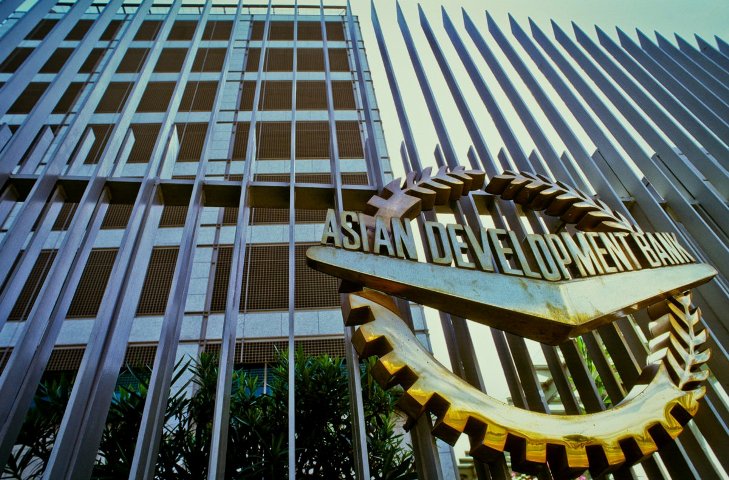Economic policies transform Asia, Pacific into center of global dynamism: ADB book
The book—Asia’s Journey to Prosperity: Policy, Market, and Technology over 50 Years—explains the reasons for Asia’s economic success, while cautioning against complacency.

- Country:
- Philippines
Sound economic policies and strong institutions have transformed Asia and the Pacific over the past five decades into a center of global dynamism, according to a new book from the Asian Development Bank (ADB). The book—Asia’s Journey to Prosperity: Policy, Market, and Technology over 50 Years—explains the reasons for Asia’s economic success, while cautioning against complacency.
Developing Asia’s share of global gross domestic product (GDP) rose from 4% in 1960 to 24% in 2018. Including Australia, Japan, and New Zealand, the share increased from 13% to 34%. During the same period, developing Asia’s per capita GDP grew 15-fold (in constant 2010 United States dollars), from $330 to $4,903, boosting incomes and lifting hundreds of millions out of poverty.
“In 1966, when ADB was established, developing economies in the Asia and Pacific region was very poor. There was pessimism about prospects for industrialization and broad development. But the region’s performance over the past 50 years has surpassed expectations by any measure—be it economic growth, structural transformation, poverty reduction, or improvement in health and education,” said ADB President Mr. Takehiko Nakao.
The book emphasizes that there is no such thing as a unique “Asian Consensus” in the region’s journey to prosperity. Rather, the policies pursued in Asia can be explained by standard economic theories, not so different from those prescribed by the “Washington Consensus” set of policies. Economic transformation in the region came about in much the same ways as in many developed economies. What was important was that many Asian countries took a pragmatic approach. They implemented import liberalization, opening up of foreign direct investment, financial sector deregulation, and capital account liberalization in a sequential way and based on meeting certain conditions.
In the past half-century, many Asian countries enjoyed a “demographic dividend” and benefited from rapid technological progress, globalization, and the generally open trade and investment regimes of developed countries. However, even with favorable demographics and external conditions, the process of economic growth is not automatic.
Asia’s postwar economic success owed much to creating effective policies and strong institutions. It was supported by governments’ pragmatism in making policy choices, decisiveness in introducing reforms, and an ability to learn from their own and other’s achievements and mistakes. In many countries, a clear vision for the future, which is often championed by forward-looking leaders and shared across a wide spectrum of social groups, contributed to broad-based growth and made a difference, especially when backed by a competent bureaucracy.
Over time, Asian economies adopted open trade and investment policies; facilitated agricultural modernization and industrial transformation; supported technological progress; invested in education and health; mobilized the high level of domestic savings for productive investments; promoted infrastructure development; pursued sound macroeconomic policies; and implemented policies for poverty reduction and inclusiveness.
The book notes that Asia should not be complacent and that it is too early to describe the 21st century as the “Asian Century”. Developing Asia still faces pockets of persistent poverty, increasing income inequality, large gender gaps, environmental degradation, and climate change. Millions still lack adequate access to health, education, electricity, and safe drinking water. Mr. Nakao also pointed out that it will take more time for Asia to become as influential as the West has been over the last five centuries. Asia must continue to make efforts to strengthen its institutions, contribute to the development of science and technology, assume more responsibilities in tackling global issues, and articulate its own ideas.
The book was produced by a diverse ADB team, led by the management group of the Economic Research and Regional Cooperation Department and the President himself, over 3 years. It provides a broad historical overview of rapid transformation in all ADB’s 46 developing economies, beyond the newly industrialized economies and several Southeast Asian countries discussed by the well-known 1993 World Bank publication, The East Asian Miracle. It considers a longer time horizon from the immediate postwar period to the present, capturing the transition from centrally planned systems to market-oriented economies. In writing, the team tried to make the book as interesting as possible by including anecdotes, data, and country examples.
The book consists of 15 chapters: (i) an overview of 50 years of development; (ii) the roles of markets and the state; (iii) industrial transformation; (iv) land reform and green revolution; (v) technological progress; (vi) education, health and demographics; (vii) investment and saving; (viii) infrastructure (energy, transport, water, and telecommunication); (ix) trade and foreign direct investment; (x) macroeconomic policies; (xi) poverty reduction and income equality; (xii) gender and development; (xiii) environmental sustainability and climate change; (xiv) multilateral and bilateral development finance; and (xv) regional cooperation. Several chapters benefit from contributions by staff engaged in ADB operations.
ADB is committed to achieving a prosperous, inclusive, resilient, and sustainable Asia and the Pacific while sustaining its efforts to eradicate extreme poverty. Established in 1966, it is owned by 68 members—49 from the region.










